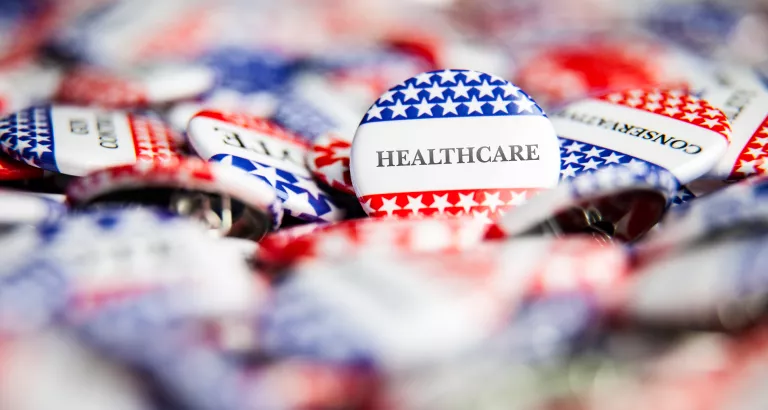Delivering the message about health insurance

A dirty little secret about government is that even when politicians can’t get rid of a program that they don’t like, they can often do a lot to make its benefits less visible and harder to get. We have seen this happen a lot with the Affordable Care Act (ACA), where governors and state legislatures had and have a lot of influence over how it is implemented in their state. And then with Presidents Trump and Biden, their approaches couldn’t be more different.
Listen all y’all, it’s a sabotage…
I have spent the last few years studying what happens when government takes an adversarial position to its own programs. Kentucky was an early success story with the ACA, cutting their uninsured rate dramatically and setting up their own state-branded health insurance exchange (kynect) under a Democratic governor—only to see it taken apart when a new Republican governor was elected in the fall of 2015. They had an award-winning media campaign that was canceled during open enrollment by the incoming administration, a campaign that myself and others were able to attribute to over a quarter of applications for health insurance coverage.
President Trump came into office promising to repeal and replace the ACA quickly, with his first executive order being a largely symbolic one designing to minimize its economic burden. All of the bluster had real effects on how people behaved, with myself and a colleague at Duke University finding that it caused a nearly 25% drop in applications during the crucial final two weeks of open enrollment after he took office in January 2017. His administration followed up with drastic reductions in advertising and navigators for the following years—eliminating all television advertising for HealthCare.gov, the federal health insurance marketplace.
A lot of justification and revisionist history followed these actions, making them appear to be thoughtful, evidence-based policy despite the fact that President Trump had already promised to make the ACA fail. A Congressional hearing led to members and witnesses making claims that everyone knew about the ACA and what was available, and that the insurance companies participating in the ACA could pick up the ball.
Private advertising, public programs
The federal government was originally spending about $100 million a year on advertising for the ACA before the cuts. Compare this to Coke and Pepsi who spend billions per year on advertising, and that $100 million is just a drop in the bucket. Coke and Pepsi’s investments in advertising have created brand awareness that is hard to rival. Public awareness of financial assistance for Marketplace health insurance plans and availability of Medicaid expansion, on the other hand, is pretty poor, particularly among the uninsured—an argument for increasing advertising and outreach, not cutting back.
What also makes this more complex is that much of the ACA is actually delivered by industry, through health insurers that offer plans on the exchanges and Medicaid benefits in many states. So the idea that these companies should bear the burden of spreading the message doesn’t seem crazy on its face, right? They already do, as evidenced by being the predominant source of health insurance advertising, and by paying the federal government what are called “user fees” to play in the ACA sandbox, a portion of which covers the cost for the government to promote the Marketplace. In reality, we weren’t actually saving taxpayer money by cutting advertising—we just weren’t spending the money paid to the federal government expressly for that purpose.
But, ignoring the government part for a second, how are health insurers making advertising decisions? Are they responding to competition or broadly informing the public as we think government probably would? Well, first off we know that government and insurers highlight different things when they promote the Marketplace and health insurance products. And, in a recent study, we found that insurers seem to be responding to strategic considerations rather than maximizing awareness.
Insurers advertise a bit more when they become a monopolist, but not enough to fill the hole left by their former competitor so total advertising falls. And when a monopolist then faces competition again, they advertise less and total advertising doesn’t meaningfully change. We also did not find evidence of a strong relationship between changes in government and insurer advertising at the county level, countering the argument made by some that insurers would fill the void when government stepped out of the picture.
Moving forward
The Biden administration has substantially reversed course on supporting the ACA—creating a months-long special enrollment period early in 2021, spending heavily on advertising to get the word out, and investing in local navigators to help people enroll this fall. With many losing jobs and loved ones during the COVID-19 pandemic in addition to usual turnover of jobs and losses of parental coverage, there is always a substantial number of Americans who need coverage and may not understand what is out there.
Everyone has a role to play, but others cannot and will not do the same job as government in educating people about its programs. They play a pivotal role in delivering the message, provide a level of credibility (to some) unmatched by others, and can do so equitably unlike insurers— which will more likely focus on what and whom benefits their bottom line most. The choice isn’t either industry or government delivering the message, the answer needs to be both.
Dr. Paul Shafer is an assistant professor in the Department of Health Law, Policy, and Management at the Boston University School of Public Health. His research focuses on the effects of the structure and implementation of state and federal health insurance policy on coverage, health care use, and health.




